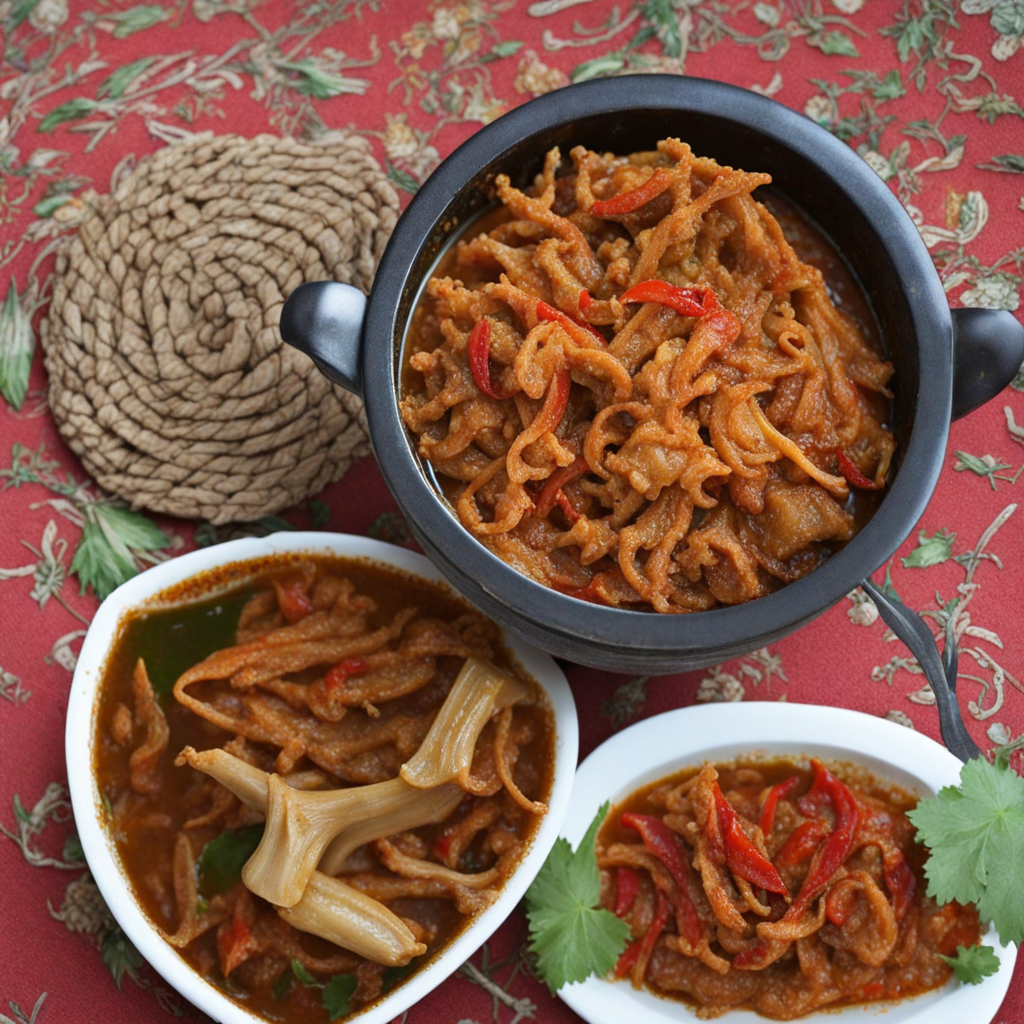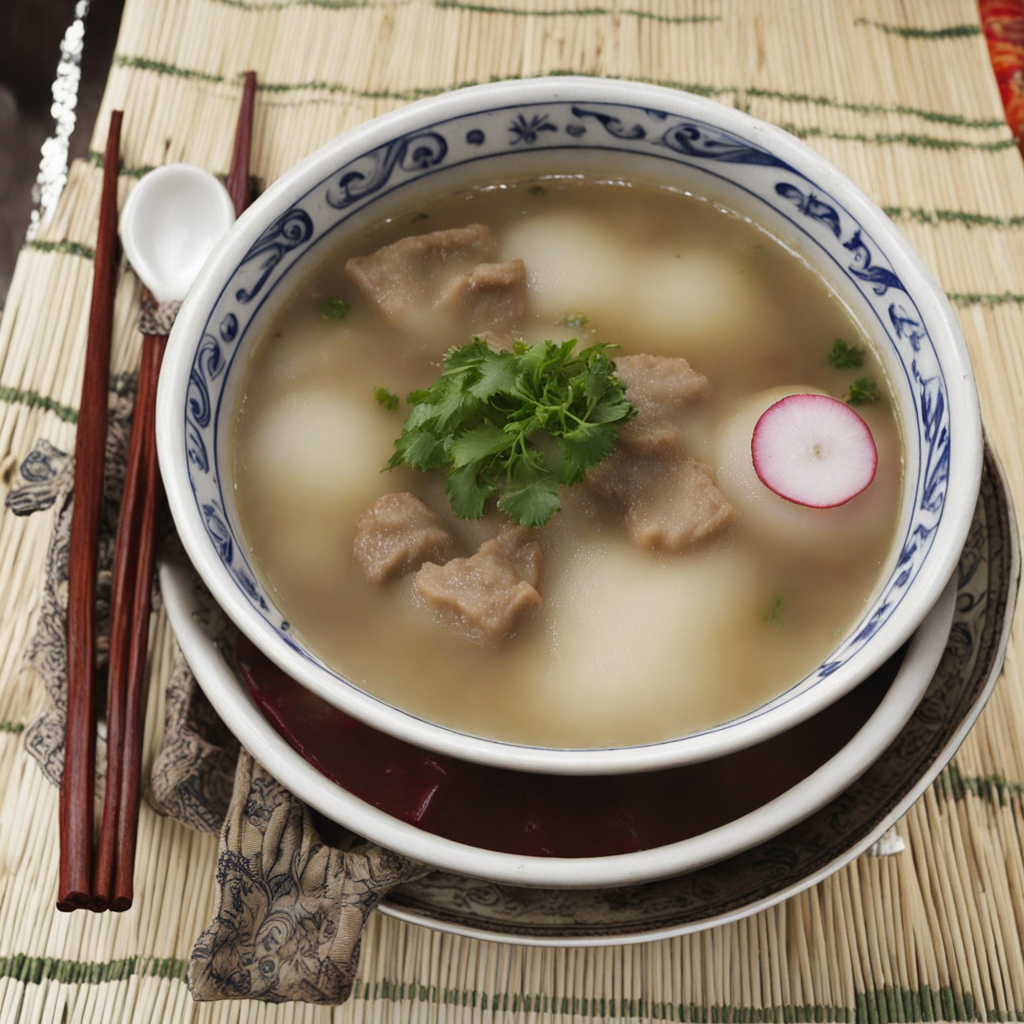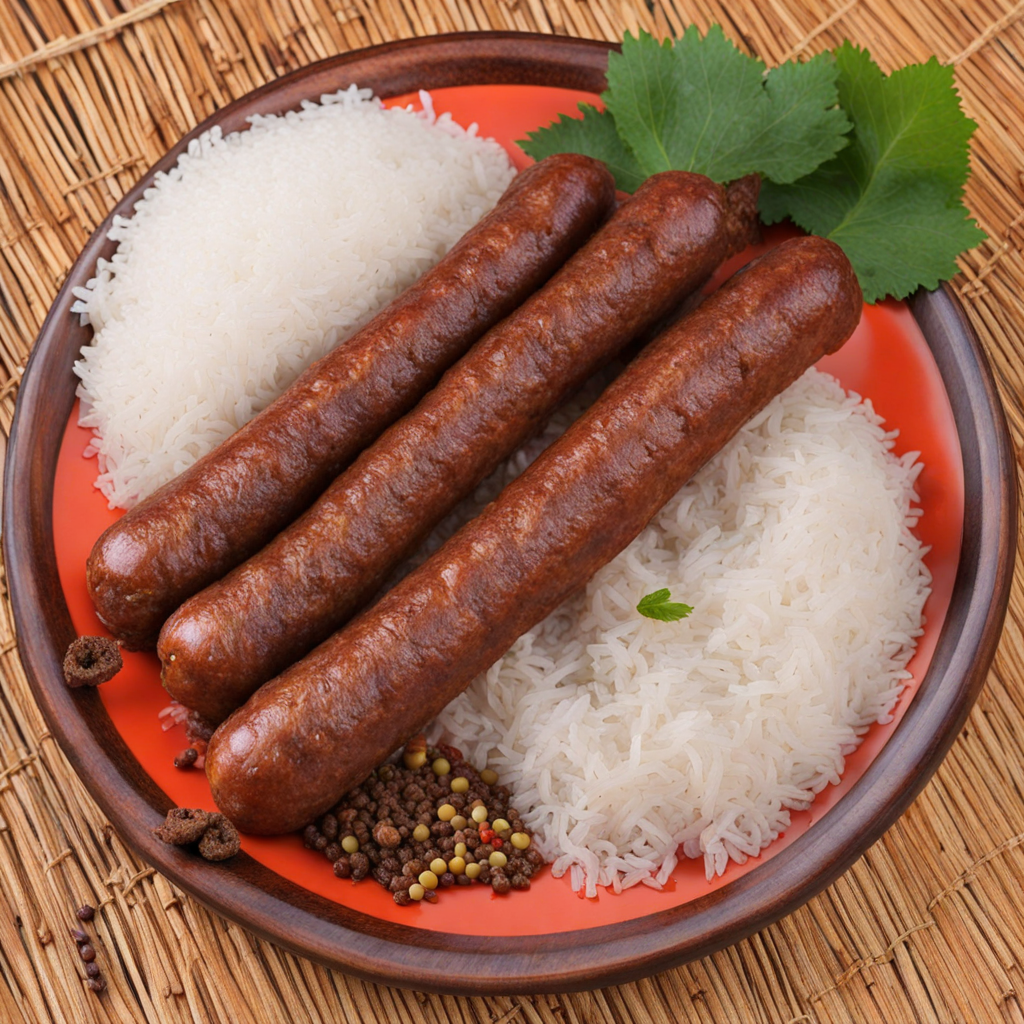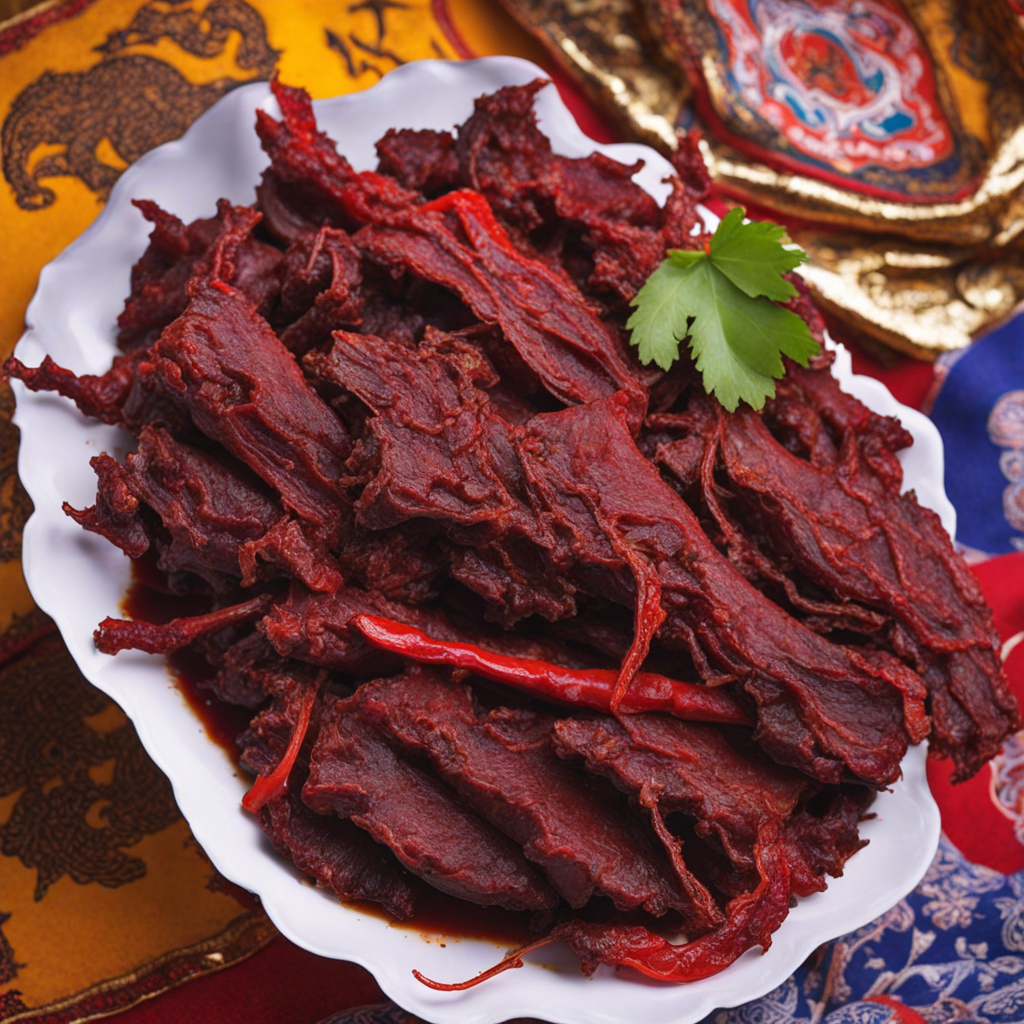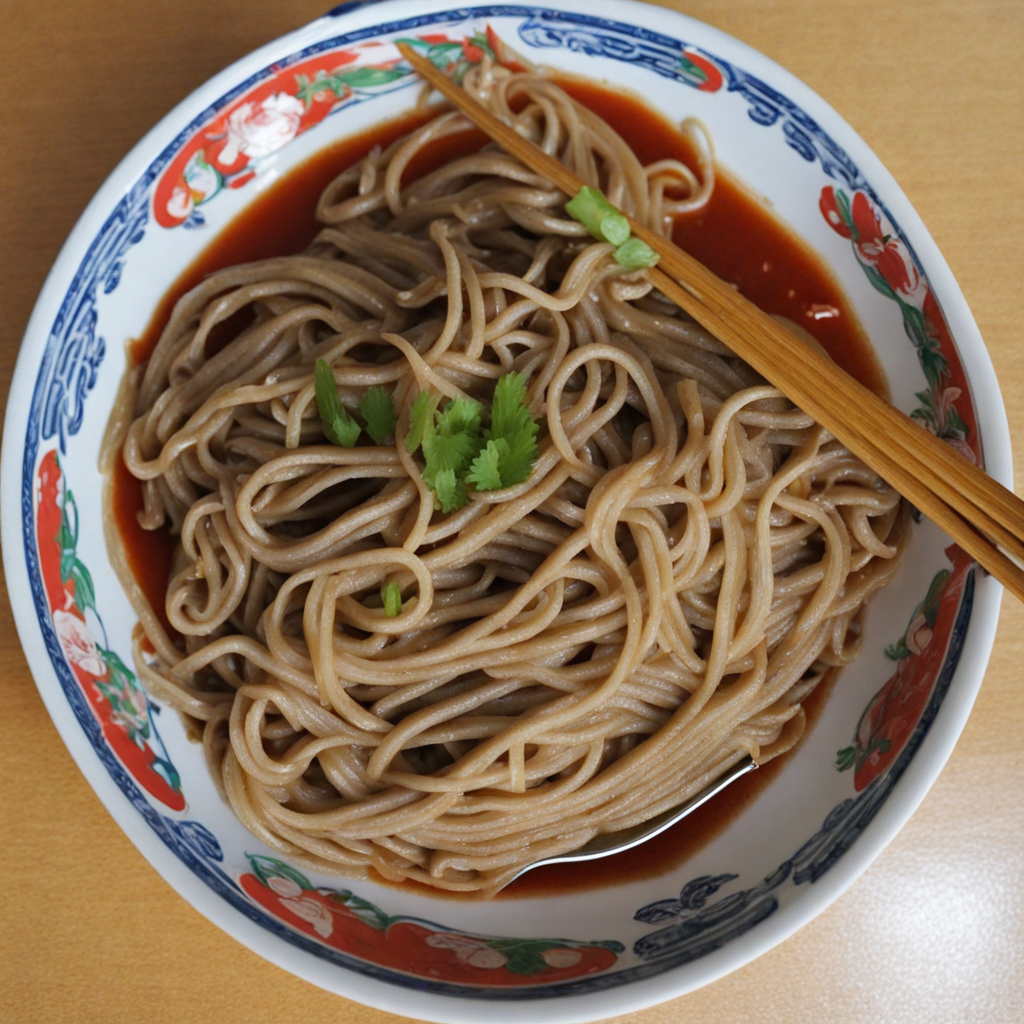Goep
Goep is a traditional Bhutanese dish that offers a unique and hearty taste experience, deeply rooted in the country's agricultural practices and cultural heritage. Typically made with finely chopped greens, such as mustard greens or spinach, Goep is often combined with various proteins like pork, beef, or even dried fish. The dish is seasoned with a blend of spices and ingredients, which may include garlic, ginger, and local chili peppers, resulting in a flavor profile that is both savory and spicy. The freshness of the greens, coupled with the umami richness of the meat, creates a delightful balance that is both comforting and satisfying. What sets Goep apart is its texture and preparation method. The greens are usually sautéed until tender, allowing them to absorb the flavors of the meat and spices. This method results in a dish that is slightly wilted yet retains a vibrant color, making it visually appealing. Goep is often served with a side of red rice, a staple in Bhutanese cuisine, which complements the bold flavors of the dish and provides a wholesome base. Eating Goep is not just about the taste; it’s an invitation to explore Bhutan’s culinary traditions. The dish embodies the essence of Bhutanese cooking, where local ingredients and simple techniques come together to create something extraordinary. Whether enjoyed at a family gathering or in a local eatery, Goep provides a warm, communal dining experience that showcases the rich flavors and cultural depth of Bhutan. For anyone seeking to broaden their palate, Goep is a must-try dish that encapsulates the spirit of Bhutanese cuisine.
How It Became This Dish
The Journey of 'གོད།' (Gyo) in Bhutanese Culinary Heritage #### Introduction In the rich tapestry of Bhutanese cuisine, 'གོད།' (Gyo) stands out as a significant and traditional food that encapsulates the essence of Bhutan's unique cultural identity. This dish, primarily made from rice, reflects the agricultural practices, spiritual beliefs, and communal values of the Bhutanese people. As we delve into the history of Gyo, we will explore its origins, cultural significance, and how it has evolved over time. #### Origins Gyo has its roots in Bhutan's agrarian society, where rice has been a staple food for centuries. Bhutan's diverse geography, ranging from the high Himalayas to lush valleys, provides a variety of agricultural products, but rice remains central to the diet of many Bhutanese communities, particularly in the southern and western regions. The origins of Gyo can be traced back to ancient times when Bhutanese farmers began experimenting with different cooking methods for rice. The term 'Gyo' is derived from the Dzongkha word for 'to boil or cook,' which suggests that the dish was a simple preparation of rice, boiled and served as a main meal. Over time, this basic recipe evolved, incorporating various local ingredients and flavors. #### Cultural Significance Gyo is more than just a dish; it is steeped in cultural significance and is often associated with rituals and celebrations. In Bhutan, food is not merely sustenance; it plays an integral role in the social fabric of communities. Gyo is often served during significant events such as weddings, harvest festivals, and religious ceremonies, symbolizing hospitality and the importance of sharing meals with loved ones. In the context of Buddhist traditions, which permeate every aspect of Bhutanese life, Gyo is sometimes offered in prayer ceremonies. The dish is believed to carry blessings and good fortune, especially when shared among friends and family. The communal aspect of eating Gyo strengthens bonds within communities and reinforces the values of togetherness and mutual support. #### Ingredients and Preparation Traditionally, Gyo is made with locally grown rice, particularly the red rice variety that is indigenous to Bhutan. This rice is prized for its nutty flavor and nutritional value. The preparation of Gyo is relatively simple but varies across regions and households. To make Gyo, the rice is typically washed and soaked before it is boiled in water until it reaches a fluffy consistency. Some variations of Gyo may include the addition of local vegetables, meats, or spices, which reflect the availability of ingredients and regional preferences. For example, in some households, Gyo is served with a side of 'ema datshi' (a chili and cheese dish), while others might pair it with pickles or stir-fried greens, enhancing the meal's flavor and nutritional balance. #### Evolution Over Time As Bhutan modernized over the decades, so did the culinary practices surrounding Gyo. While the traditional methods of preparation and communal eating remain prevalent, contemporary influences have introduced new ingredients and techniques. Urbanization and globalization have led to a fusion of flavors, with Gyo being paired with international cuisines and ingredients such as olive oil, garlic, and even cheese varieties from outside the region. In urban centers, Gyo has also found its place in restaurants and eateries, adapting to the fast-paced lifestyle of city dwellers. Some modern interpretations of Gyo include the use of quinoa or other grains for health-conscious consumers, demonstrating the dish's adaptability while still honoring its roots. Moreover, the Bhutanese diaspora, as they settled in various countries, have taken Gyo with them, introducing it to new audiences. This has sparked interest in traditional Bhutanese cuisine and has led to the establishment of Bhutanese restaurants abroad, where Gyo is featured prominently on menus, often presented alongside other Bhutanese dishes, allowing for a shared cultural experience. #### Gyo in Contemporary Bhutan Today, Gyo continues to be a beloved dish among Bhutanese people, representing a bridge between tradition and modernity. In rural areas, it is still prepared in its most traditional form, often shared among families during daily meals or special occasions. In urban areas, it serves as a reminder of home and heritage for those living away from their native villages. Additionally, the Bhutanese government has been keen on promoting traditional foods as part of its cultural preservation efforts. Food festivals celebrating Bhutanese cuisine often feature Gyo, allowing younger generations to learn about their culinary heritage while enjoying the communal aspect of food. This cultural initiative not only strengthens national identity but also promotes tourism, as visitors are eager to experience authentic Bhutanese flavors. #### Conclusion The history of 'གོད།' (Gyo) is a testament to the enduring nature of Bhutanese culinary traditions. From its humble beginnings as a simple boiled rice dish to its status as a cultural symbol, Gyo embodies the spirit of Bhutan—the connection to the land, the importance of community, and the reverence for shared meals. As it continues to evolve, Gyo remains a cherished food that reflects the heart and soul of Bhutan, reminding us of the power of food to unite, nourish, and celebrate life. Whether enjoyed in a bustling city or a serene village, Gyo will undoubtedly remain a staple of Bhutanese cuisine for generations to come.
You may like
Discover local flavors from Bhutan


